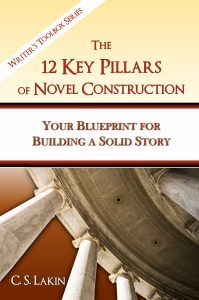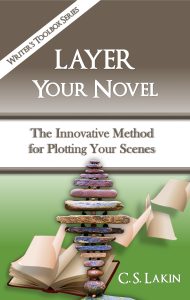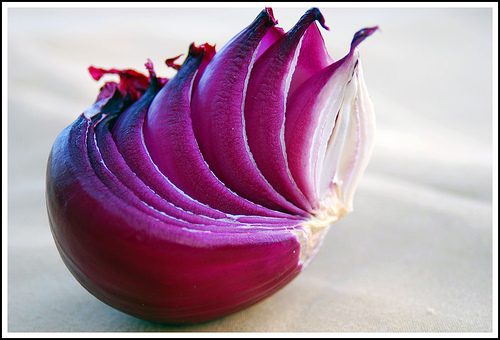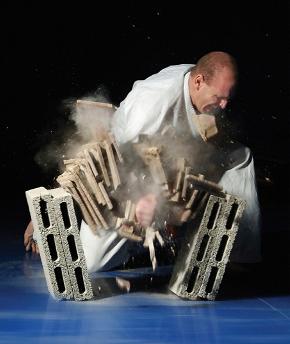Why Layering Your Novel Is the Method for Success
Last year I spent some months talking about layering scenes. As time goes on, I see how few writers—especially aspiring novelists—have any clue how to organize their scenes. They brainstorm their scene ideas once they’ve settled on a premise of sorts, and then they just start writing from scene one.
The result is usually disastrous.
While we read books from page 1 to the end, that is not the best way to lay out a novel. In fact, it’s probably the worst way.
Novels need to be built like houses. You don’t build a house by framing up a door, sticking the door in the doorway, then entering into . . . nothing. You don’t build in a linear direction, from front to back. And even though you do build vertically, from the ground up, there’s the issue of framework.
You have to build off your concrete slab or perimeter foundation first with a framework. If you’re building a house, that framework will consist of wood studs and posts hammered together according to your blueprint. Walls are built with studs at specific spacing, and the spaces for doors and windows are framed in with headers and supporting studs on the sides and where the sills will go.
All this to say: every structure relies on key supporting elements. Some supporting elements have to hold tremendous weights. You’ve probably seen open-beam ceilings, with maybe one giant wood beam traversing a huge room, seemingly holding up the whole roof.
Yet, there are other studs that are small 2x4s that don’t need to support much of anything. They’re helpful in supporting the integrity or strength of a wall, but if you knock a few out to put in another window, your house isn’t going to collapse.
If you’ve been following my blog and studying my writing craft books, you are probably sick of my construction analogies. But really, if you look at building a novel the way one builds a house, it’s helpful.
And with this topic of plot layering, it’s a logical parallel.
I’m finishing up with my next book in The Writer’s Toolbox series: Layer Your Novel. I wasn’t planning on using those blog posts from last year in a book, but I think this book is going to be one of the most helpful craft books published for novelists.
Why? Because the layering method that I use to write my novels is logical, intuitive, and fairly simple.
No, It’s Not Easy
Don’t get me wrong. Writing novels is complex. It is not easy. It takes months, maybe years, to get how to write a great novel. And I’ve been spending years and have written a million+ words in the last six years on my blog and with my craft books to help writers get how to do this.
So, while the method I shared with readers last year on layering is, in my opinion, simple and straightforward, it’s not easy. It requires work. Digging in. Studying hard. Analyzing thoroughly.
To make it easier, I gave you all charts and examples. My 10 Key Scene chart. My 20-scene chart with a subplot. My 20-key scene chart for romance.
I spent weeks explaining to you what your ten key scenes are all about and why you need to start with those. With a layer of ten key scenes as a foundation for your novel.
In other words, to write a great novel, you don’t start at the beginning with scene 1. You start with the ten key scenes that will support your entire story. The big heavy posts that fit in just the right places to ensure your story doesn’t collapse.
 In my book The 12 Key Pillars of Novel Construction you learn how to build strong pillars of character, premise, conflict, high stakes, etc. But those are your story’s components. Once you build all those pillars, you have to build a story. And that requires you create terrific scenes and you put them in the right places.
In my book The 12 Key Pillars of Novel Construction you learn how to build strong pillars of character, premise, conflict, high stakes, etc. But those are your story’s components. Once you build all those pillars, you have to build a story. And that requires you create terrific scenes and you put them in the right places.
So there’s a process here. You work on all your components and characters and backstory. You hone your premise and concept so you have a compelling story to tell. You start brainstorming scene ideas, and of course, you first learn all about scene structure so you know how to write terrific scenes.
Stop right there.
If you haven’t taken the time to master scene structure, you’d best slow down and spend some time focusing on that. It’s not a good idea—in fact, it’s a terrible idea—to try to write a novel, or even plot one out, if you don’t have scene structure under your belt.
And I have plenty of book chapters and blog posts on scene structure. And charts. Be sure to download my 8 Steps to a Perfect Scene chart as well as my Scene Structure Checklist chart. Those will help. But they’re just aids. You need to take the time to both study and put into practice what you learn about scene structure.
I make a lot of charts. I think they are super handy, and I wish someone had made handy charts for me 30+ years ago when I started writing novels. Take advantage of these charts. They really will help.
So where am I going with all this?
Since I’m finishing up Layer Your Novel, I want to dive right back into that whole layering process. You can read all the posts from last year on my 10-20-30 Scene Builder concept. Read about pinch points and midpoint and turning points and twists and complications. All that is going to be highly invaluable in your effort to master novel writing.
 All this will be in my book too, and more. So, since my mind is entrenched this summer in scene layering, I hope you will consider trying out my method.
All this will be in my book too, and more. So, since my mind is entrenched this summer in scene layering, I hope you will consider trying out my method.
I’ll share some insights and tips over the next weeks that I’ve put together as I finish up the book. One thing I’m excited about and think will really help writers is the analysis of the key scenes in novels of various genres. I’m spending much of the summer reading best sellers of various genres, mostly books I’ve never heard of by authors I’ve never read. Yes, it gives me an excuse to read for fun, something I hardly ever have time to do. But what I’m doing is summarizing every scene in each book, then identifying the ten key scenes for each, then the next layer, then the next.
I present three specific methods for layering that novelists might chose to use. I use all three (not for each book—I only use one per book). One method focuses on layering in a subplot. Another method centers on the more common “action-reaction” method found in all novels, and the third method is specific to romance structure.
While there could possibly be endless methods or variations of these methods, I feel these three cover the basics for most genres. And by deconstructing a handful of novels, to show you how great novels are structured on a framework of those ten key scenes (for the most part), I’m hoping you’ll see how your novel can and should be structured.
I find all this exciting. And that’s because the more I see great novels fitting perfectly into time-tested structure, the more I’m convinced structure is everything. I firmly believe you can’t write a terrific novel without utilizing terrific structure. It’s a blueprint for success. A road map. It takes so much of the guesswork out of novel writing. And I really want writers to stop guessing. Guessing leads to disaster. And it’s a waste of time.
So, I look forward to sharing with you some great helpful tips over the next weeks. I hope to publish Layer Your Novel at the end of summer. Once I’ve read all the fun novels sitting on my table, waiting for my analysis.
Have you tried to use my charts? If so, share what you’ve learned from the effort? Have you noticed where your plot falls short? What questions do you still have about the ten key scenes?
AND IF YOU ARE A NOVELIST . . . if you’re NOT in my email Fast Track group, you need to join. You get free books, special offers, lots of help to fast track you to success! If you are already on my mailing list, all you have to do is click on the “update your preferences” link at the bottom of any email blast from me and click “JOIN” for the Fast Track group. No participation required.
To join my mailing list and get in the group, click on the link on the right to get my free Strategic Planning for Writers ebook (and when you enter your email, click on JOIN for the Fast Track group).
If you are serious about success, you need all the help you can get. You need to filter out all the noise and distractions and spend your time wisely, focusing on what will truly help you reach your goals.












Thanks for this awesome post,I was looking for this from a long time….
Thanks again.
Thank you so much for this! Really appreciate it. Been writing Alias Jeannie Delaney forever! It’s the life story of a devastating cowgirl who’s the fastest gun in the west and also bisexual,and, as you say, I need all the help I can get!(Too many exclamation marks!!!!).
Jo Clutton UK